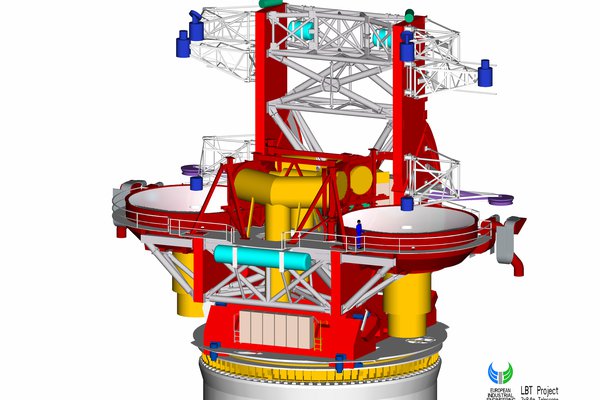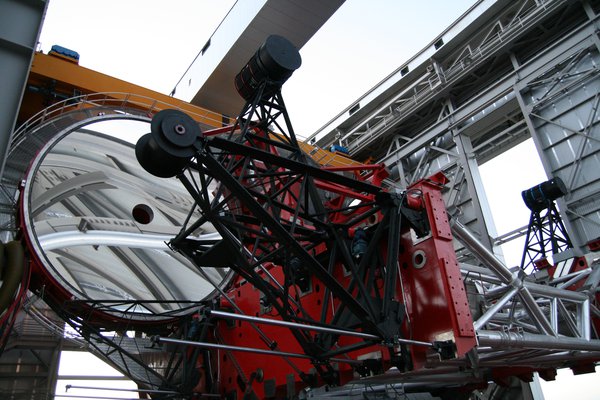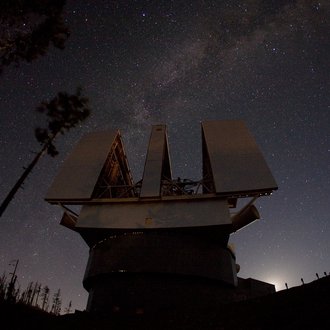LBT
The Large Binocular Telescope (LBT) is located at the Mt. Graham International Observatory in Arizona, USA. The telescope is of a novel design collecting simultaneously the light from the Universe with two circular mirrors, each 8.4 m in diameter. The total collecting area of the telescope corresponds to a single circular mirror with a diameter of 11.8 m. This makes the LBT the most powerful single mount telescope in the world when it comes to light collection ability. It is also possible to combine the light from the two mirrors in what is called 'interferometric mode'. This allows the LBT to deliver images with a resolution about 10 times better than the Hubble Space Telescope. The telescope saw "First Light" in 2005 with one main mirror, and regular science observations were initiated in January 2007. Another breakthrough was made in 2010 when the first adaptive secondary mirror was successfully put into operation.
The telescope incorporates a number of novel technologies to achieve its full potential. The huge main mirrors are spun-cast honeycomb mirrors developed and fabricated in the Steward Observatory Mirror Lab. The secondary mirrors are fully 'adaptive'. This means that the surface of the mirror can be fine adjusted by computer in real time to compensate for instabilities in the atmosphere. This allows the telescope to achieve angular resolutions very close to the theoretical limits even when the atmospheric conditions are not perfect.
The Leibniz Institute for Astrophysics (AIP) is a partner in the LBT project through the LBT Beteiligungsgesellschaft (LBTB) which coordinates the participation of five German institutes in the project. The other four institutes are the MPI für Astronomie (Heidelberg), the MPI für Radioastronomie (Bonn), the MPI für Extraterrestrische Physik (Munich) and the Landessternwarte Heidelberg. The LBTB joined the project officially in February of 1997 and holds a 25% stake. Other partners are Italy, represented by Arcetri Astrophysical Observatory (Florence), the University of Arizona, and the Ohio State University.

CAD drawing of the LBT
Credit: AIP/LBT
LBT getting ready for the night.
Credit: AIP/LBTPartners:
LBTB: Leibniz-Institut für Astrophysik Potsdam; MPI für Astronomie (Heidelberg); MPI für Radioastronomie (Bonn); MPI für Extraterrestrische Physik (München); Landessternwarte Heidelberg
Further partners: INAF (Italy) represented by Arcetri Astrophysical Observatory (Firenze); University of Arizona (USA); Ohio State University (USA).
Involved AIP sections and groups:
Technical Section, High-resolution Spectroscopy and Polarimetry, Telescope Control and Robotics